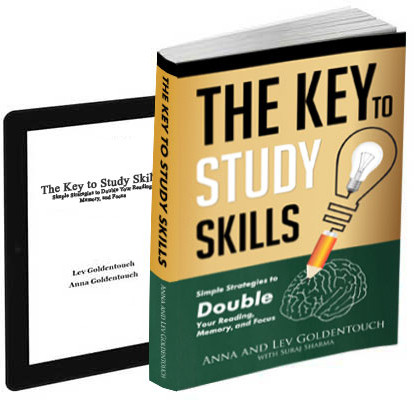Fear is one of the most powerful emotions we can feel, yet not everyone experiences it the same way. Why do some brains enjoy fear while others avoid it at all costs? From haunted houses and horror movies to roller coasters and skydiving, certain individuals actively seek out frightening experiences, reporting feelings of exhilaration and even joy. In contrast, others find the same scenarios paralyzing. The difference lies deep within our brains, and understanding it can unlock fascinating insights into human behavior, chemistry, evolution, and even self-growth. In this article, we will explore why some people enjoy fear, how the brain processes fear differently for different individuals, the role of dopamine, the cultural evolution of scary experiences, and the neuroscience of controlled fear in safe environments.
To continue your journey into mastering your mind and emotions, follow our updates on the KeyToStudy Facebook Page and dive deeper into personal growth through our featured course: Senses and Intuition.
The Brain’s Fear Circuitry: Not All Alike, and Why It Matters
Fear is a primal emotion, but how our brain processes it is surprisingly sophisticated and varies from person to person. At the center of this process is the amygdala, which acts like an alarm system, detecting threats in the environment. When the amygdala senses danger, it sends signals to the hypothalamus and activates the sympathetic nervous system, leading to the classic “fight-or-flight” response. But for some individuals, the intensity and duration of this response are different.
Some individuals have a finely tuned neurological ability to recognize threats but immediately analyze them for real-world consequences. This creates a more managed, less overwhelming fear reaction. Others may have more reactive amygdalas, which fire excessively even when the threat is minimal. The speed at which the prefrontal cortex can evaluate the situation and calm the emotional response often determines whether fear becomes enjoyable or traumatizing.
This processing gap helps answer why some brains enjoy fear, because their brain circuits allow for quick recovery and reinterpretation of the threat. A more detailed discussion on optimizing brain responses and resilience can be found in the article Better Brains.
The Dopamine Rush of Thrills and Chills: Pleasure in the Pulse
What do horror movies, bungee jumping, and haunted houses have in common? They all offer a cocktail of brain chemicals that many people find irresistible. Dopamine, the reward chemical, is released in the brain during exciting, novel, or high-stress events. For some, this dopamine rush is addictive and deeply pleasurable.
In addition to dopamine, adrenaline, and endorphins, course through the system during fear-inducing moments. This neurochemical trio creates a natural high—a blend of excitement, invincibility, and euphoria. People who experience this cocktail more intensely may chase it, returning to fear-based entertainment repeatedly.
Psychologists often refer to this as sensation-seeking behavior. It’s no surprise that individuals with high dopamine sensitivity report higher satisfaction after these activities. These reactions can even become a form of escapism, providing relief from the monotony of daily routines.
This brain chemistry supports a real craving for fear in certain people. Their brains are literally wired to treat fear not as pain, but as pleasure. This also ties in with the broader subject of neuroplasticity and emotional flexibility—concepts you can delve into further in Changing the Brain Through the Body.
Safe Spaces to Be Scared: Why Context Changes Everything
Enjoying fear relies heavily on the concept of perceived safety. If our environment feels secure, our brain allows us to experience the physical arousal of fear—elevated heart rate, tunnel vision, rapid breathing—as thrilling rather than traumatizing. This is why controlled scares, such as those found in theme parks or movies, can be enjoyable.
A haunted house or horror movie sets off the alarm systems in our brain, but our cognitive mind recognizes the fiction. This separation between physical reaction and intellectual understanding creates the paradoxical enjoyment. The thrill feels real, but our logic tells us we’re safe, which allows the body to enjoy the rush without long-term stress.
Some individuals even use these experiences as informal emotional training, learning how their body reacts under duress and gaining resilience by voluntarily facing their fears. Explore the deeper connection between sensory input and brain processing in the article Sensual Mindfulness and Your Brain, which outlines how being more present in the moment can affect how we interpret fear.
From Caves to Coasters: The Historical Roots of Self-Induced Fear
The human relationship with fear dates back to our earliest ancestors. Prehistoric tribes told stories of spirits and monsters to explain natural phenomena. These stories weren’t just entertaining—they also served to warn and protect. Over time, humanity turned fear into a form of ritual, art, and eventually, entertainment.
Even in ancient myths and religious ceremonies, fear played a central role. By staging dramatized events like ghost rituals or war games, societies trained individuals to respond to fear in ways that promoted courage and unity. This evolved into organized scare experiences like dark rides, horror plays, and ultimately modern attractions.
Our need to test ourselves against fear, it seems, is universal. It bonds communities, entertains crowds, and helps individuals prove their bravery. For deeper learning about how the brain interprets such sensory complexity, consider taking the course Senses and Intuition.
Building Stronger Bonds Through Shared Fear: Emotional Chemistry at Play
Have you ever felt closer to someone after experiencing something terrifying together? That’s no coincidence. Shared fear accelerates bonding. This phenomenon is tied to the hormone oxytocin, which is released during intense emotional states. When you’re afraid and someone is beside you, your brain builds trust and closeness with them to foster survival.
This effect can be observed in social experiments where strangers cooperate more after shared scary experiences. That’s why first dates at haunted houses or thrill rides are surprisingly effective: they shortcut emotional intimacy.
This concept is supported by Shelley Taylor’s “Tend and Befriend” theory, which explains how social bonding can increase during stress. Whether it’s holding hands during a scary movie or huddling together during a power outage, our brains push us toward others when we’re afraid.
Why Some People Hate Fear: Trauma, Memory, and Anxiety Sensitivity
For some, fear is anything but fun. Individuals with heightened anxiety sensitivity or past trauma experience fear as an uncontrollable and painful sensation. Their fight-or-flight system activates intensely, and their brain struggles to switch it off. This can lead to overwhelming panic rather than pleasurable excitement.
Traumatic events are often encoded in the brain as high-intensity, long-lasting memories, especially when experienced in early childhood. These experiences create strong associations between similar stimuli and distress, leading to phobias or chronic anxiety.
Understanding fear also means respecting its boundaries. What thrills one person can harm another. The article Children Read Write explores how early cognitive and emotional experiences shape the developing brain, offering insight into why some adults avoid fear at all costs.
The Global Monster Archetype: Breaking Natural Laws to Terrify
Across time and cultures, one truth remains consistent: the scariest creatures are those that defy nature. Ghosts, zombies, vampires, and monsters represent our deepest fears—death, illness, deformity, and the unknown. These beings often operate outside natural laws, and that unnaturalness taps into deep evolutionary anxieties.
The consistent features across global monsters—disfigurement, resurrection, mutation—represent not just fear of death but the corruption of life. We are terrified of what we don’t understand, and monsters are the ultimate embodiment of that.
Unnatural distortions—like faces covered with masks or inhuman movements—create sensory dissonance, which alarms our brain and raises red flags. Dive deeper into this by reading Changing the Brain Through the Body, which discusses how bodily sensations interact with mental models.
Brain Tech and the Future of Fear Regulation
As neuroscience progresses, we’re learning how to regulate fear responses intentionally. Brain-machine interfaces, cognitive behavioral therapy, and sensory reprogramming can help retrain the brain to respond to fear stimuli differently.
The future of fear management could include real-time feedback devices that show your physiological response to stimuli, allowing individuals to track and train their fear responses. These innovations could revolutionize how we approach mental health, entertainment, and even education.
Read more in Brain Electronic Device, which explores the emerging intersection of electronics and brain function.
Real-World Fear: Managing Career Anxiety and the Unknown
While artificial fear can be fun, real-world fears like financial insecurity, job loss, or existential uncertainty can feel overwhelming. These fears aren’t about simulated threats—they’re about survival, status, and self-worth.
When our survival feels threatened—financially or socially—the same fear circuits activate. However, because these fears are persistent, they can become chronic and harmful to well-being. Recognizing and redirecting these fears into action is a powerful strategy.
The article How to Prevent the Fear of Not Finding a Job from Limiting You addresses how to confront and reframe such fears. By treating them like puzzles to solve rather than dangers to avoid, you shift from helplessness to empowerment.
Tuning Your Senses: The Secret to Mindful Fear Management
When you face fear intentionally, your brain rewires. Sensory mindfulness teaches you to become aware of physical sensations, emotional responses, and cognitive narratives in real time. This gives you power over how you interpret fear.
It’s not about denying fear—it’s about transforming it. Mindfulness practices, like breath awareness or body scanning, help desensitize the nervous system to perceived threats. Over time, individuals become more resilient and emotionally intelligent.
Learning to notice and embrace physical sensations—like a racing heart or tight chest—without panic is a form of emotional alchemy. It turns distress into data. Sensual Mindfulness and Your Brain shows how this technique can be practiced and refined.
To enhance your sensory intelligence and turn fear into fuel, explore the course Senses and Intuition.
Final Thoughts: Why Do Some Brains Enjoy Fear?
So, why do some brains enjoy fear? It boils down to neurochemistry, sensory interpretation, past experiences, and social context. For some, fear is a rollercoaster of pleasure chemicals and confidence boosts. For others, it can be an overwhelming, unpleasant sensation rooted in trauma or hyper-reactivity.
Understanding this distinction allows us to design better learning environments, healing practices, and entertainment experiences. It also fosters compassion for those whose brains work differently from ours.
As we ask again, why do some brains enjoy fear?, We realize that the answer lies at the heart of human curiosity and resilience. Fear isn’t just something to survive—it’s something to understand, embrace, and even enjoy.

Get 4 Free Sample Chapters of the Key To Study Book
Get access to advanced training, and a selection of free apps to train your reading speed and visual memory

